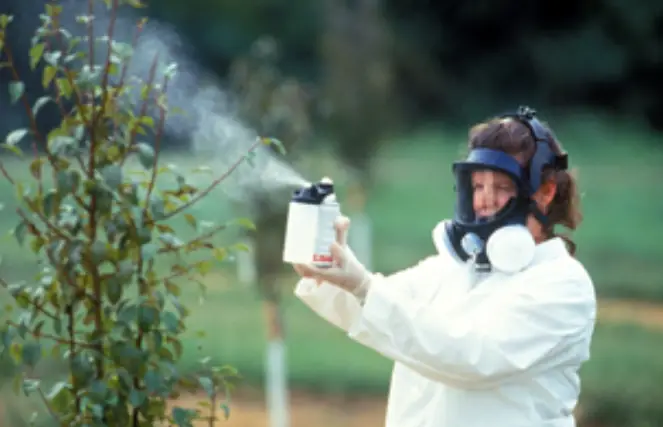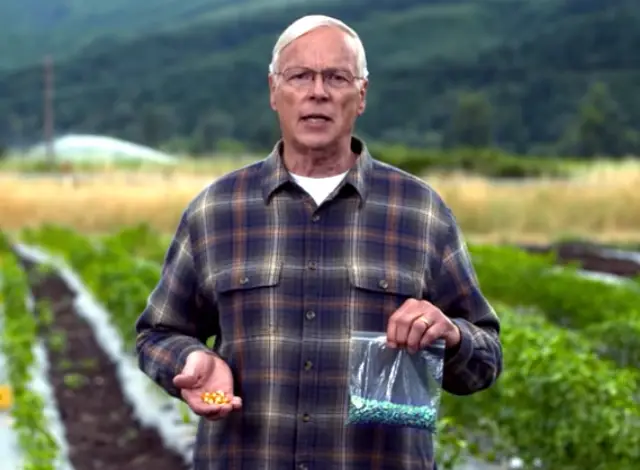
In 1995, the first insecticide-producing GMO crop (corn) was officially by approved by the United States Environmental Protection Agency.
Now, nearly 25 years later, the American agricultural landscape has become a toxic, deadly minefield of pesticides, insecticides, herbicides, poison-coated seeds called neonicotinoids, and other instruments of death that are ravaging honeybee populations from Maine to California.
That was the finding of a new study published in the journal PLOS One earlier this month, which warned that modern agricultural techniques are causing a veritable “insect apocalypse” in the “Land of the Free.”
“This is the second Silent Spring. Neonics are like a new DDT, except they are a thousand times more toxic to bees than DDT was,” said Kendra Klein, a senior staff scientist at the Friends of the Earth U.S. organization, referring to the timeless classic Rachel Carson book first published in 1962.
The chemical DDT, produced by Monsanto and other companies, was powerful enough to almost wipe out the bald eagle population during its heyday and was used to control the malaria-carrying mosquito population.
Now, neonicotinoid pesticides may be the new DDT, except they work in a far more subtle, yet perhaps just as toxic, way.
“The Good News is We Don’t Need Neonics”
Using a new tool that measures toxicity to honey bees, the length of time a pesticide remains toxic, and the amount used in a year, Klein and fellow researchers found that the new generation of pesticides has made agriculture far more toxic to insects.
The tests her team ran were the same exact same ones used by the U.S. Environmental Protection Agency, and the results were not pretty.
The team found that America’s agricultural landscape is now 48 times more toxic to honey bees, and likely other insects, than it was 25 years ago, as noted in this report from National Geographic.
The 25-year mark is especially significant because it coincides with the introduction of genetically engineered crops (GMOs).
The first GMO crop, the FlavrSavr Tomato, was introduced in 1994 but rejected by the market.
The aforementioned insecticide-producing GMO corn was approved in 1995 and has since become widely planted, while the first herbicide-resistant GMO crops were introduced in 1996.
This new form of agriculture has led to the proliferation of toxic, pesticide-intensive techniques such as the use of dicamba, which has been banned in many states for destroying large swaths of crops, neonicotinoids, and more.
A first-generation neonicotinoid named imidacloprid was first patented by Bayer in 1985, but the two most notorious neonics, clothianidin and thiamethoxam, did not enter the market until the early 2000s, piggybacking on the success of glyphosate and other harsh chemicals implicated in the destruction of bee populations.
Bee populations have taken a massive hit ever since.
*****
Big Sale on Organic Foods and Supps From Paleo Valley!
Everything is On Sale for the 2024 New Year – Limited Time Only
Stock Up on the Best Organic Food For Your Spring Adventures – Here
*****
The sharp rise in toxic chemicals matches up with the decline in bees, butterflies, and other key pollinator species, as well as birds, Klein said.
Klein’s team also found that neonicotinoids accounted for 92 percent of this increased toxicity. Many GMO seeds are treated with this toxic seed coating, providing a toxic one-two punch that harms wildlife and pests alike.
These pesticide-coated seeds can remain toxic for more than 1,000 days in the environment.

Ray Seidler, the first EPA scientist to study GMOs, holds up a bag of regular corn (left) and pesticide-treated GMO seeds.
While the U.S. government knows this fact, critics say they aren’t going far enough.
The agency rejected the registrations of 12 different neonicotinoid pesticides from Bayer, Syngenta, and Valent this past May in a win for environmental groups.
But the bad news is that these companies will be allowed to continue using existing stock of the bee-killing pesticides until at least 2020, and these products represent just 12 of the 59 neonicotinoid products containing the toxic chemicals clothianidin and thiamethoxam.
Needless to say, there is far more work to do.
The good news, however, is that activist groups have been making headway in this department, having forced the cancellations as part of a 2018 settlement previously won against the EPA on the grounds of protecting Endangered Species.
“The good news is that we don’t need neonics,” Klein said. “We have four decades of research and evidence that agroecological farming methods can grow our food without decimating pollinators.”
In 2013, the UN declared that organic farming can feed the world while supporting biodiversity and food security for all human beings, and mentioned biodynamic farming as a way to help achieve that goal. But this type of farming is rarely practiced.
Numbers of insect-eating birds have also plummeted in recent decades, Klein’s team found. The birds eat contaminated insects, causing health problems and potentially even deaths.
“Every bird needs to eat insects at some point in their life cycle,” said Steve Holmer of American Bird Conservancy.
“It’s stunning. This study reveals the buildup of toxic neonics in the environment, which can explain why insect populations have declined,”
Neonicotinoids are used on almost all corn and canola oil seeds, the majority of corn and cotton seeds, and many yard plants from garden centers. Only five percent of the toxin ends up on the corn or soy plant, and the rest ends up in the soil and the environment, National Geographic reported.
The toxic seeds also dissolve in water leading to deleterious effects on fish and other aquatic life.
Bees are considered to be a benchmark for other insect species, but other insects are clearly dying off as well. A 2014 analysis found that insect abundance has declined 45 percent in just 40 years, while the Monarch butterfly population has fallen 80 to 90 percent.
The study is the first of its kind to quantify how toxic agricultural lands have become for insects, but it was not able to quantify the many other documented effects of neonicotinoids on bees, including reproductive issues, altered immune function, and inability to navigate effectively.
“For that reason we think our study is a very conservative estimate,” Klein said.
If what the researchers found is indeed true, a new threat to all life has been unearthed.
Toxic, GMO and pesticide-heavy agriculture is literally killing off life from the bottom up, and the clock is ticking if we want to preserve life on this planet as we know.
Supporting organic farmers and growing your own food is a good place to start.
******
Thanks for reading! For more information, read the full report from National Geographic here and check out the Friends of the Earth website here. You can also subscribe for more articles like these in your inbox by clicking here. This article was first written in August 2019 and updated in March 2024.
Thanks for installing the Bottom of every post plugin by Corey Salzano. Contact me if you need custom WordPress plugins or website design.





